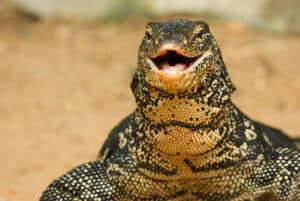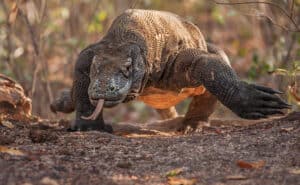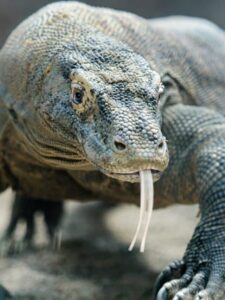Continue reading for our analysis...
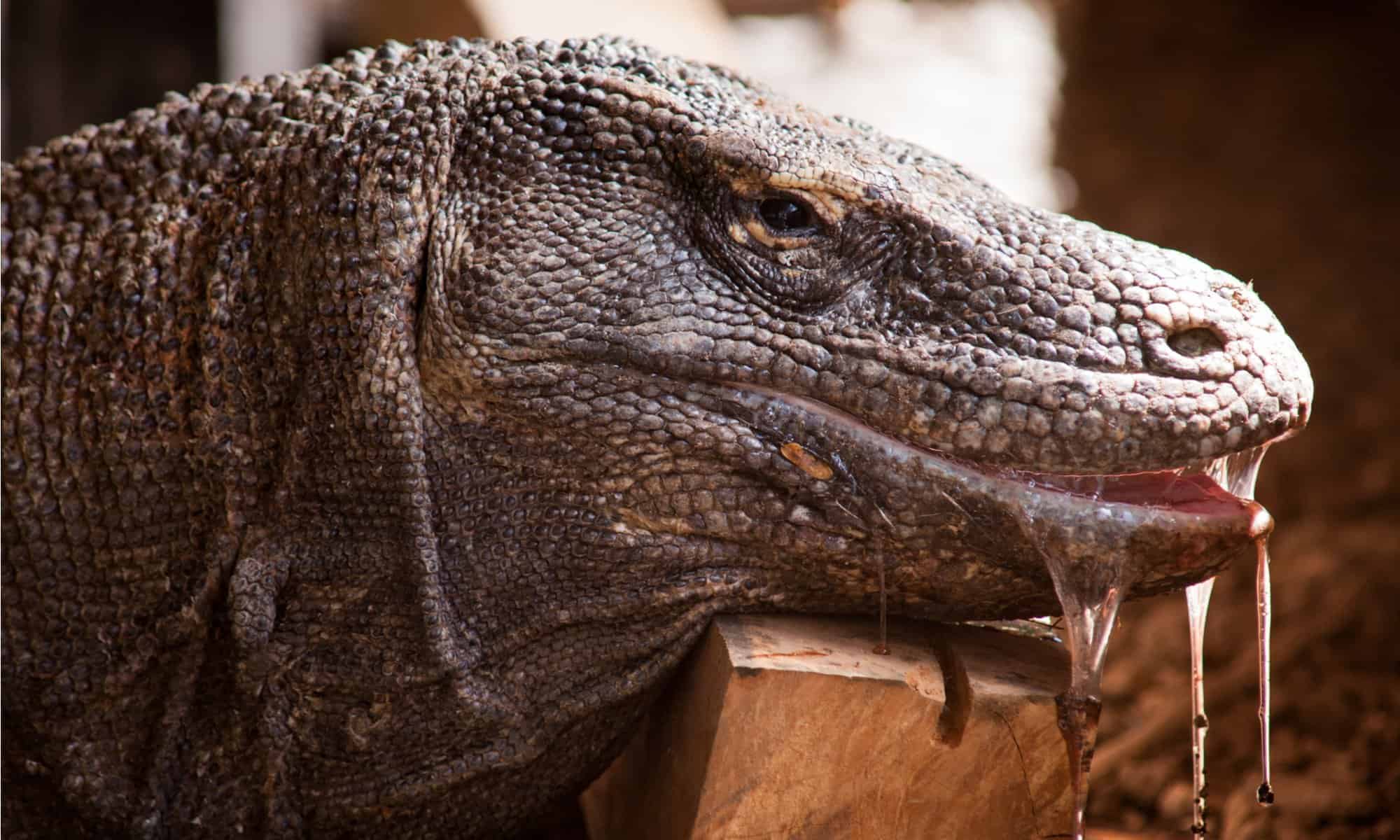
Komodo dragons are unique and magnificent animals — but are not what most people would class as cute and cuddly. They are apex predators in their environments and have some impressive adaptations that make them formidable hunters.
In this clip, we see one swallow a whole wild boar. We learn from the video notes that the wild boar had been bitten by a Komodo dragon a few days before and had gradually died. Let’s take a closer look at what makes this reptile so unique.
Komodo Dragons’ Very Limited Range
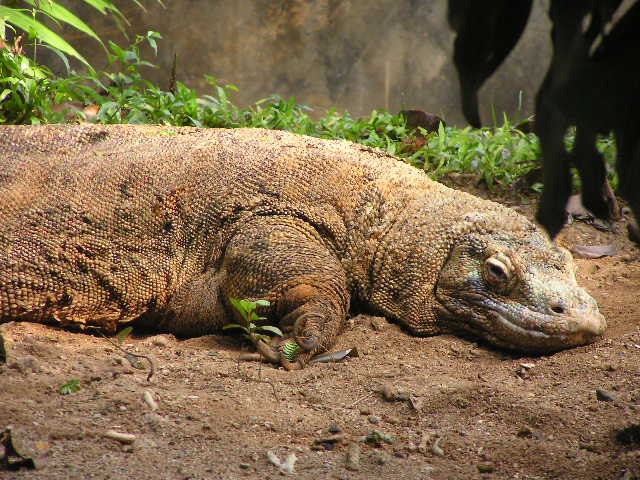
There are only 3,000-5,000 Komodo dragons in existence.
©frank wouters from antwerpen, belgium, CC BY 2.0, via Wikimedia Commons – License
Komodo dragons are only found in the wild on five Indonesian islands. There are between 3,000 and 5,000 of them alive today and they are a species of monitor lizard.
They have been described as one of the most aggressive and dangerous lizards on the planet. However, due to a combination of climate change, habitat loss, and a shortage of prey, they are now endangered. These guys like to hang out on open woodlands, dry savannahs, scrubby hillsides, and dried riverbeds.
Komodo dragons can live for 40 years and grow to more than 10 feet in length and 300 pounds in weight.
These large reptiles have thick bodies with short, muscular legs, and a very powerful tail that they use for fighting and for support when they are standing up on their hind legs.
Komodo Dragons’ Hunting Techniques
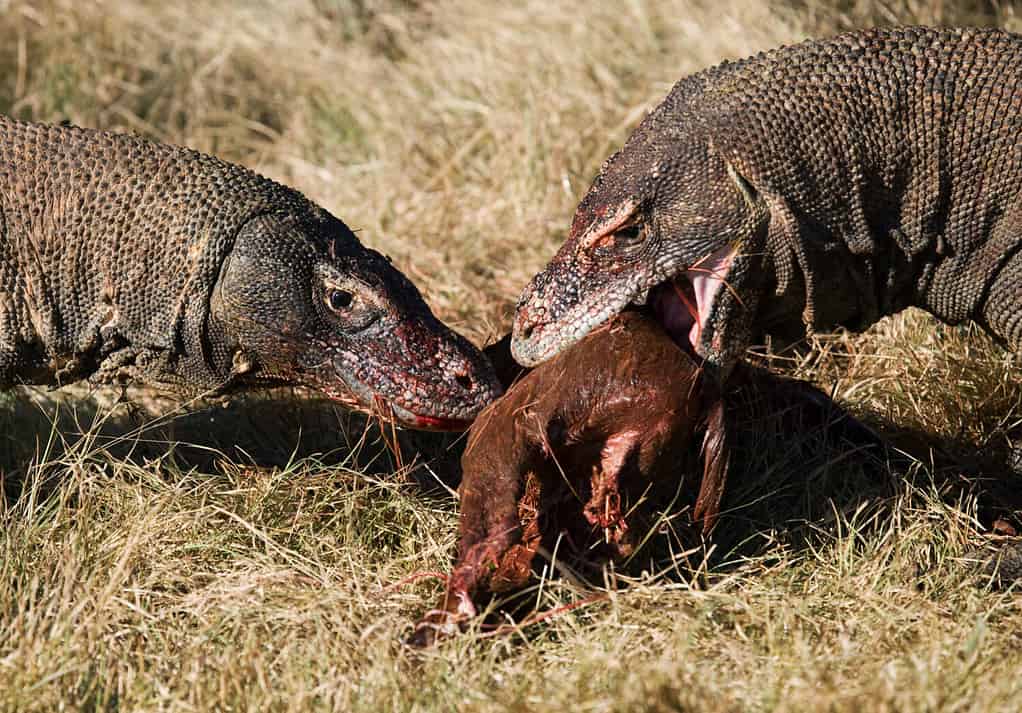
Komodo dragons fatally injure prey by biting it using their serrated, curved teeth.
©GUDKOV ANDREY/Shutterstock.com
Komodo dragons use an “ambush” strategy for hunting by hiding in tall grass or shrubs next to trails frequented by animals, then utilizing speed and ferocity to attack. They are one of the most aggressive hunters on the planet.
They detect prey using their excellent eyesight and by picking up chemical signals using their forked tongue. The tongue moves the chemicals to a special scent-detecting organ called Jacobson’s organ in the roof of its mouth.
Komodo dragons fatally injure prey using their serrated, curved teeth and even have a venom gland that delivers harmful bacteria and an anti-coagulant into the victim. Even if the poor animal does not die from blood loss, it will perish from a nasty infection! However, this is not true for other Komodo dragons, who seem to be immune from their venom.
Is It Normal Behavior for a Komodo Dragon to Eat a Wild Boar?
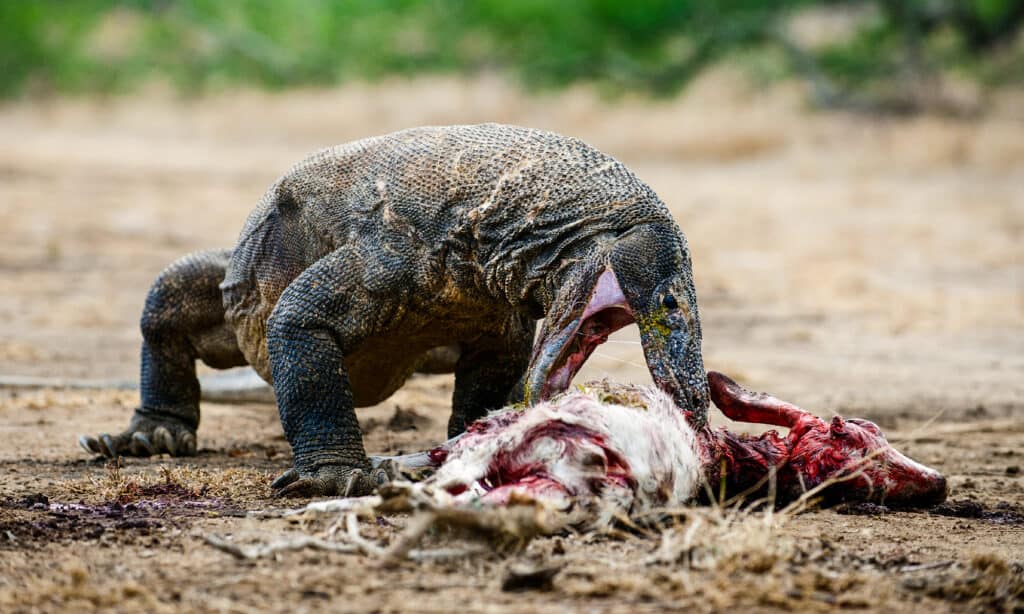
Komodo dragons will eat almost type of meat, including goats and wild boar.
©Sergey Uryadnikov/Shutterstock.com
Yes, it is, as the Komodo dragon’s diet primarily consists of meat. While this is usually deer, goats, and pigs, they are opportunistic hunters and can go after almost any kind of animal that crosses their path, from small rodents to large water buffalos.
They prefer to hunt live prey and due to their sheer power and size can take down animals much larger than themselves. They are also cannibalistic and will consume other Komodo dragons! Younger, smaller Komodos are more at risk from being eaten, and as they are adept climbers they will be more likely to hunt in trees to find food and avoid larger Komodos.
Not only do Komodo dragons eat their own kind, they will hunt and kill a human like any other prey. There are records of people being ambushed, bitten, and actively targeted by Komodos, and these animals’ venom and infectious bacteria can be fatal to humans.
Additionally, these reptiles are happy to scavenge for carcasses. They have stomachs that can expand when needed, enabling them to consume up to 80 percent of their body weight. This ability to swallow an animal that is nearly equal in weight to themselves can be seen in our featured video clip, as a Komodo dragon ingests a whole wild boar.
How Large Are Komodo Dragons?
Komodo Dragons are enormous reptiles; in fact, they are the largest extant species of reptiles. Adult males can grow up to three meters or almost 10 feet long and weigh, on average, 150-175 pounds. They can, however, get up to over 300 pounds. The largest on record was 10.3 feet and 366 pounds! Females are smaller at about 8 feet long and weigh quite a bit less than the male.
The next largest lizard is the Asian (Malayan) Water Monitor. This big reptile can get up to almost 3 meters, or 9.85 feet, and weighs, on average about 100 lbs. However, it can grow to 200 pounds. So, it is comparable to the Komodo dragon in size, but overall is somewhat smaller.
Other large lizards include the Tree Crocodile (Crocodile Monitor), the Perentie (Goannas), the Black-throated Monitor, the Nile Monitor, the Lace Monitor, the Blue Iguana, the Galapagos Land Iguana, and the Marine Iguana. See our article on the 10 Largest Lizards in the World: https://a-z-animals.com/blog/largest-lizards/
Thank you for reading! Have some feedback for us? Contact the AZ Animals editorial team.




